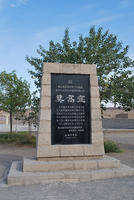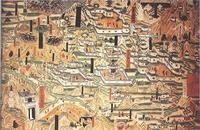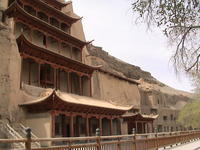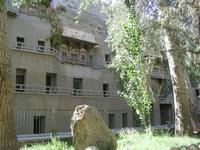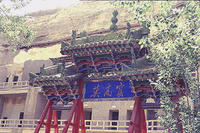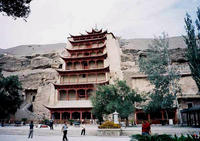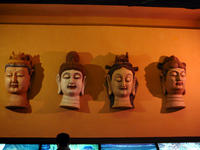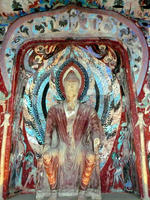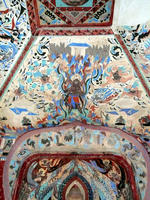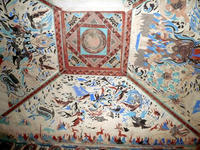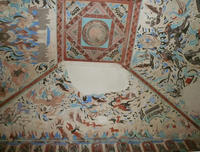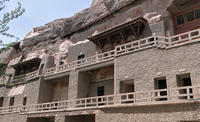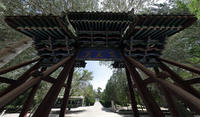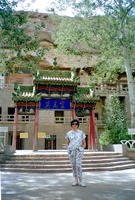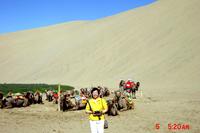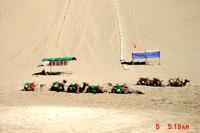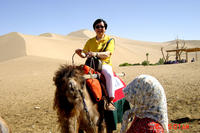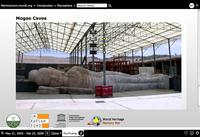You are in: Asia -> China -> Mogao Caves, and traditional search or Image Gallery will yield results of this site only
Mogao Caves
| Site number: | 440 |
|
| Type of site: | Cultural | |
| Date: | 1000 AD | |
| Date of Inscription: | 1987 | |
| Location: | Asia, China, Dunhuang County, Gansu Province, eastern foot of Mount Mingsha, 25km SE of County Seat | |
Up to 75 images are shown here. Click on each for more details or on Image Gallery for more images.
Six official UN languages:
Arabic,
Chinese,
English,
French,
Russian,
Spanish
Other languages: Dutch, Esperanto, Finnish, Italian, Japanese, Luxembourgish, Swedish, Vietnamese
Other languages: Dutch, Esperanto, Finnish, Italian, Japanese, Luxembourgish, Swedish, Vietnamese
| Description: | Positioned at a strategic point on the Silk Route, the site finds itself at the crossroads of trade as well as intellectual, cultural and religious influences; the 492 cells and cave sanctuaries in Mogao spanning 1,000 years of Buddhist art are renowned for their statues and wall paintings. --WHMNet paraphrase from the description at WHC Site, where additional information is available. For 360 degree imaging of this site, click here. | |
| The Mogao Caves, or Mogao Grottoes (Chinese: 莫高窟; pinyin: mò gāo kū) (also known as the Caves of the Thousand Buddhas and Dunhuang Caves) form a system of 492 temples 25km (15.5 miles) from the center of Dunhuang, an oasis strategically located at a religious and culture crossroads on the Silk Road, in Gansu province, China on the edges of the Taklamakan Desert. The caves contain some of the finest examples of Buddhist art spanning a period of 1,000 years. Construction of the Buddhist cave shrines began in 366 CE as places to store scriptures and art. The Mogao Caves are the most well known of the Chinese Buddhist grottoes and, along with Longmen Grottoes and Yungang Grottoes, are one of the three famous ancient sculptural sites of China. --Wikipedia. Text is available under the Creative Commons Attribution-ShareAlike License. For 360 degree imaging of this site, click here. | ||
| Source: | http://whc.unesco.org/en/list/440 | |
| Source2: | http://whc.unesco.org/en/list/440/video | |
| Reference: | 1. UNESCO World Heritage Center, Site Page. | |


